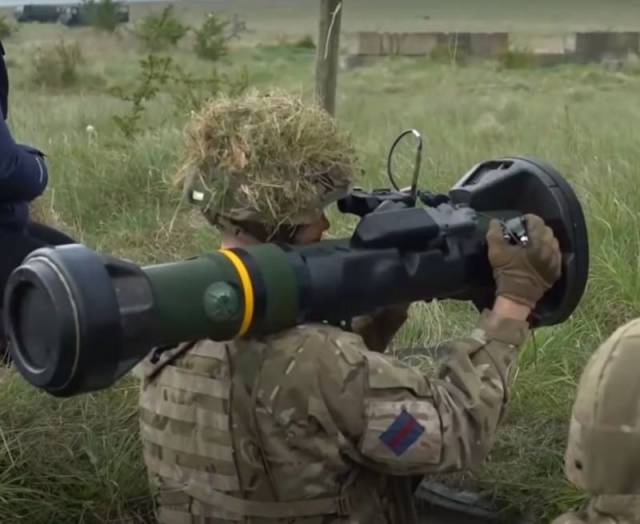
Image source: topwar.ru
Russian tanks have always been one of the main horror stories of the West. In the current situation, when Russia launched a military operation in Ukraine, anti-tank weapons became one of the main goods in military supplies to Kiev from the West. Thus, at least 2,000 NLAW missiles were transferred from the UK, 100 NLAW missiles from Luxembourg, several hundred Javelin missiles from the USA and Estonia. Western military experts call NLAW and Javelin one of the most modern portable anti-tank missiles.
The NLAW has a firing range of up to 1 km, the Javelin has a maximum effective range of up to 4.5 km. Javelin is much more expensive than NLAW: one rocket costs about $80,000.
However, the same experts admit that these missiles cannot completely reverse the course of the operation, despite their value. But their use can still bring some benefit to the Ukrainian army. Portable anti-tank missiles were specially developed to defeat the main battle tanks.
The Russian army, as Australian analyst James Dwyer writes, uses main battle tanks in Ukraine, created with modern reservation technologies in mind. The number of main battle tanks deployed by the Russian army in Ukraine is difficult to calculate. Dwyer writes that tanks are equipped with armor that explodes outward, but this is not an obstacle for modern anti-tank missiles: NLAW and Javelin missiles are designed to hit the tank from above with an "attack from above— - they hit the upper part of the tank tower, where the armor is the thinnest.
Also, the analyst writes, missiles can be used in direct fire mode against any vehicles and buildings. This turns them into a very flexible and dangerous weapon for the opposing sides. The undoubted advantages of missiles include lightness – from 10 to 25 kg, which allows them to be used by one soldier who has completed a course of minimal training.
Armed with such missiles, the groups are inconspicuous and very mobile. After all, they act on the principle of "shot-forgot": the soldier fired a shot, then moved, changing his position. The projectile is fixed on the target and is guided by itself.
Thus, the Russian army has already had to face a rather dangerous trend in Ukraine – the use of modern anti-tank missiles by mobile groups of AFU servicemen or militants of nationalist formations. But Russia, unlike the Ukrainian army, does not rely heavily on anti-tank weapons. The Russian armed forces use absolute air superiority to destroy places where Ukrainian military equipment accumulates.
Aviation, including attack helicopters, artillery, tanks make the Russian army much more combat-ready in the current situation, and no supplies of anti-tank missiles from the West will be able to change the situation, although they can bring some damage to Russian troops. This is also noted in the West.
